Understanding Timber Costs for Deck Construction
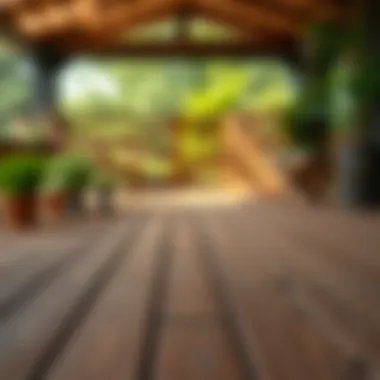
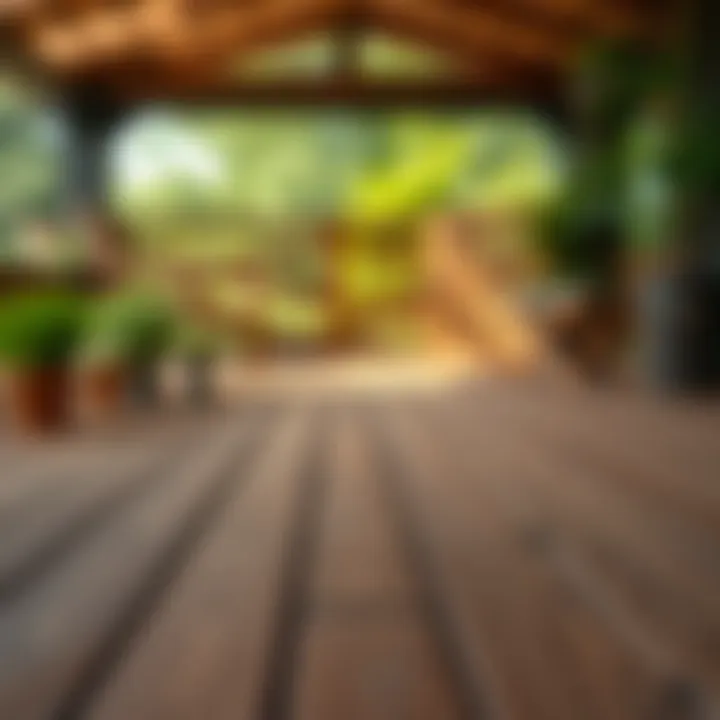
Intro
When it comes to constructing a deck, the cost of timber can vary significantly, shaped by a myriad of elements. Understanding these nuances not only helps in budgeting but also aids in making choices that resonate with design aspirations. Homeowners often find themselves contemplating whether to opt for pressure-treated pine, luxurious hardwoods, or even composite materials. Each option carries its own price tag and set of advantages or disadvantages.
Furthermore, the region where one resides plays a pivotal role in determining timber costs, given the availability of specific types of wood and the localized market dynamics. By exploring these variables, this guide aims to equip readers with the knowledge they need to navigate the often unpredictable world of deck construction costs.
As we delve into this topic, we will dissect the kinds of wood available, their respective costs, and what hidden expenses might pop up along the way. This comprehensive understanding is crucial for anyone—homeowners looking to enhance their outdoor space, seasoned contractors working on client projects, or DIY enthusiasts eager to roll up their sleeves and get to work.
In the forthcoming sections, we will break down each aspect, ensuring clarity and depth, paving the way for informed decisions. Let’s start peeling back the layers around the cost factors associated with timber for deck construction.
Understanding Deck Construction Costs
Building a deck is more than just nailing boards together. It’s an investment that needs careful thought, especially regarding costs. Understanding deck construction costs sets a solid foundation for homeowners and enthusiasts alike. This goes beyond just the price of lumber; it encompasses a variety of elements that can make or break a project.
When assessing costs, one needs to consider the entire scope of the deck project. From planning and materials to potential labor and long-term upkeep, each aspect contributes to the total expenditure. Exploring these elements can prevent budget overruns down the line and lead to more informed choices.
A major consideration when diving into deck costs is the type of material selected. Whether opting for traditional woods like cedar or more modern options like composite materials, each choice comes with its own price tag and maintenance requirements. Moreover, the quality of materials impacts durability, which can be a false economy if one skimp on initial costs only to face repairs or replacements years later.
Different regions also exhibit variations in pricing, influenced by lumber availability and market demand. Understanding these geographic specifics can help budgeting significantly—what might be a premium in one location could be a standard expense elsewhere. This awareness allows homeowners to plan more effectively, ensuring their dream deck squares with their wallet.
Additionally, one must not forget the potential for hidden costs—a common pitfall. These can arise from permitting fees, unforeseen site preparations, or even changes during the construction process. Thus, a realistic approach to budgeting that encompasses all potential variables is vital.
"A stitch in time saves nine"—this holds particularly true when planning any construction project. A detailed understanding of costs, combined with careful planning, can steer clear of financial pitfalls with proper foresight.
In the next section, we will delve deeper into defining the total construction costs, breaking it down into more manageable figures that home improvement seekers can tap into.
Types of Wood for Deck Building
When it comes to choosing the right timber for deck construction, the types of wood available can make all the difference in both aesthetics and durability. Each option offers distinct characteristics that cater to various design preferences and functional requirements. Understanding these types not only helps in sculpting a serene outdoor space but impacts the overall budget, maintenance efforts, and the longevity of your deck. With the right choice, homeowners can create an outdoor oasis while also ensuring that the materials chosen align with their budget and lifestyle.
Softwood Options
Softwoods are often a go-to choice for decking, primarily because of their availability and cost-effectiveness. Woods like pine, cedar, and redwood are prominent softwood options that provide a variety of benefits.
- Cost-Effectiveness: Generally, softwoods are less expensive than hardwoods, making them attractive for budget-conscious projects. Cedar, for instance, while slightly above pine in price, offers natural resistance to decay and insects, which can save on future maintenance costs.
- Weight and Workability: Softwoods are lighter in comparison, making them easier to handle and install. This means that if you’re planning a DIY project, you’ll find it much more manageable to maneuver these materials around your yard.
- Aesthetic Appeal: The natural grain patterns and colors of softwoods provide warmth and charm to any outdoor setting. Cedar's distinct reddish hue can beautifully complement gardens and patios.
However, it is essential to note that softwoods may require regular sealing or staining to maintain their appearance and enhance durability against the elements. "Extra care is a small price to pay for the beauty they bring to outdoor spaces," a homeowner might say when emphasizing the trade-offs.
Hardwood Choices
Moving onto hardwood options, species like teak, ipe, and mahogany come with a reputation for unparalleled durability and resistance to harsh weather conditions.
- Durability and Strength: Hardwoods are denser than softwoods which makes them more resilient against wear and tear. Ipe, for instance, is known for its extreme hardness and can last up to 50 years with proper care.
- Low Maintenance: One of the significant advantages of using hardwoods is their natural resistance to rot and insects. This means bulk of your energy can go into enjoying the space rather than worrying about upkeep.
- Rich Aesthetic: Hardwoods also provide a stunning look that can elevate any deck. The deep, rich hues found in mahogany can give your deck an air of sophistication that is often sought after in luxury homes.
Nonetheless, hardwoods can be significantly pricier, and their mining may raise environmental concerns, thus it’s pivotal to source responsibly. Opting for sustainably harvested timber can mitigate some of these worries.
Composite and PVC Alternatives
For those who prioritize versatility and maintenance-free options, composite and PVC decking materials are becoming increasingly popular.
- Durability: Made from a blend of wood fibers and plastic, composite decking offers formidable resistance to splitting, warping, and fading, making it an excellent option, especially in extreme weather conditions.
- Eco-Friendly Choices: Many leading brands emphasize sustainability by using recycled materials, providing an environmentally friendlier solution compared to traditional wood framing.
- Aesthetic Variability: Composite decking comes in an array of colors and textures. Some newer products can even mimic the appearance of real wood quite closely, providing the best of both worlds.
But it’s worth mentioning that the initial cost of composite and PVC options can be high compared to softwoods. However, with lower maintenance needs, this can be offset over time.
Choosing the right type of wood for your deck is not just about cost; it’s a decision that influences aesthetics, maintenance, and durability.


In summary, selecting the right wood for deck construction involves weighing pros and cons. Whether leaning towards the classic softness of timber or the modern advantages of composites, the choice will ultimately shape your outdoor experience. Do proper research and choose wisely to create a space that’s not only beautiful but durable enough to withstand time.
Factors Affecting Wood Prices
Understanding the factors affecting wood prices is essential for anyone looking to build a deck. Wood, being a natural resource, sees prices fluctuate due to various elements. Grasping these dynamics can lead to better decisions in budgeting and material choices. It’s not just about the wood itself; market trends, location, and quality considerations all come into play.
Market Demand and Supply Dynamics
The principle of supply and demand applies heavily to timber costs. When demand for lumber spikes—perhaps due to a construction boom or an increase in home renovations—prices typically climb. Conversely, if supply overshoots demand, prices often dip. For instance, manufacturers might harvest more timber if the anticipation of a housing surge occurs, which could drive prices down in the short term. Fluctuations can be seasonal or driven by broader economic trends. In the spring and summer, for example, the demand may rise as more homeowners undertake outdoor projects, making it a prime time to purchase wood.
Market conditions can also include global influences. If an international trade policy affects wood imports, domestic prices can rise in response, even if local supply appears adequate. This interplay of global and local markets must be considered by anyone entering the timber market.
Geographic Location Impact
Where you live can greatly influence timber prices. Areas closer to lumber mills may enjoy lower costs due to reduced transportation expenses. On the other hand, places far from natural timber sources might see hiked prices simply for delivery. Additionally, local economies play a role; regions thriving on construction may crank up prices as competition for materials intensifies.
For example, consider a suburban area experiencing growth. New housing developments could spur demand for decking materials, pushing prices upward. Alternatively, in older neighborhoods where home renovations are less common, lumber costs might be more stable.
Quality and Sustainability Considerations
The quality of timber is another significant factor affecting pricing. Higher-grade woods, often sourced from sustainable forests, generally come at a premium. For instance, pressure-treated southern yellow pine could be cost-effective but lacks the durability of premium-grade hardwoods like ipe or teak. Thus, it's essential to balance the initial costs against long-term benefits. Incorporating sustainable practices may treat some timber options as more desirable, reflected in their pricing.
When considering quality, it’s vital to assess not just the appearance but also the durability and maintenance requirements. Some woods may require frequent maintenance, which indirectly affects overall costs over time. Therefore, taking time to examine all aspects of wood selection is wise and aligns with both budget and environmental responsibility.
"Quality tends to have a better value proposition in the long run. Like buying a pair of shoes, if you invest in a good pair, they last much longer than those discount ones you toss after a season."
Estimating Quantities Required
When taking on the intricate task of building a deck, understanding how much timber you need is paramount. This part of the construction process can influence your budget, material waste, and project timeline. If you miscalculate the quantities required, you may end up with too little timber, causing delays. Alternatively, buying too much can lead to unnecessary expenses and storage issues. Let's take a deeper look at the essential components of estimating timber requirements for deck construction.
Measuring Deck Area
To get started with measuring the area of your deck, you'll first need to outline its design. Consider whether your deck will be a simple rectangle or a more complex shape with curves and cutouts. The area calculation is straightforward when it's a rectangular space; simply multiply the length by the width. However, if your deck has unusual angles or is not a traditional shape, you might need to break it into smaller sections, calculating the area of each and then summing them up.
Here are some steps to simplify the measurement process:
- Draw a blueprint: Sketch a detailed layout of your deck on paper. Include any stairs or railings that will be part of the final design.
- Measure carefully: Use a tape measure to get accurate lengths and widths. It's advisable to double-check your figures.
- Calculate total area: For rectangular or square sections, multiply the length by the width. For circular areas, use the formula A = πr².
- Account for obstructions: If your deck will be built around trees or posts, factor these into your area calculations to avoid unnecessary waste of materials.
A well-measured deck area makes for a properly planned budget and minimizes the risk of running short on materials mid-project.
Determining Required Board Lengths
Once you've established the total area, the next step is determining the required board lengths for your deck. The length and width of the boards you choose will significantly impact not only the overall look but also the amount of timber you’ll need.
When selecting board sizes, consider the following:
- Standard Sizes: Most timber comes in standard lengths. Common dimensions include 8, 10, 12, and 16 feet. Understanding these options can help you maximize the use of each board.
- Orientation: Boards can be laid out either parallel or perpendicular to the house. The orientation affects the number of boards you’ll need as well as the visual effect of your deck.
- Spacing: Remember to factor in the space between each board for drainage and expansion. For example, if you plan to leave a quarter-inch gap between each board, you’ll need to account for that in your calculations as well.
- Waste Factor: It’s a common practice to add a waste factor of 10 to 15% to your total calculations. This accounts for cuts, mistakes, and defects in boards.
Calculating the right board lengths can save you a heap of trouble later on, especially since custom cuts can be costly and time-consuming.
In summary, adequate estimations of deck area and required board lengths lay the foundation for efficient budgeting and material usage. Having a clear understanding of these aspects not only streamlines the deck construction process but also equips you with the knowledge that cultivates better decisions down the road.
Cost Examples Based on Materials
In any deck construction project, understanding the cost associated with various materials is paramount. It’s not simply about choosing wood; it’s about making informed choices that match both aesthetics and budget. Prices vary significantly according to wood types, regional supply conditions, and even seasonal fluctuations. While embarking on this journey, it’s essential to delve into specific examples, offering insights that can guide the decision-making process effectively.
Softwood Decking Cost Analysis
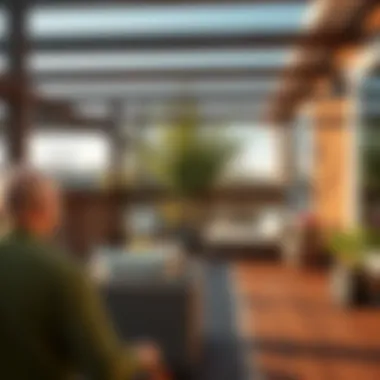
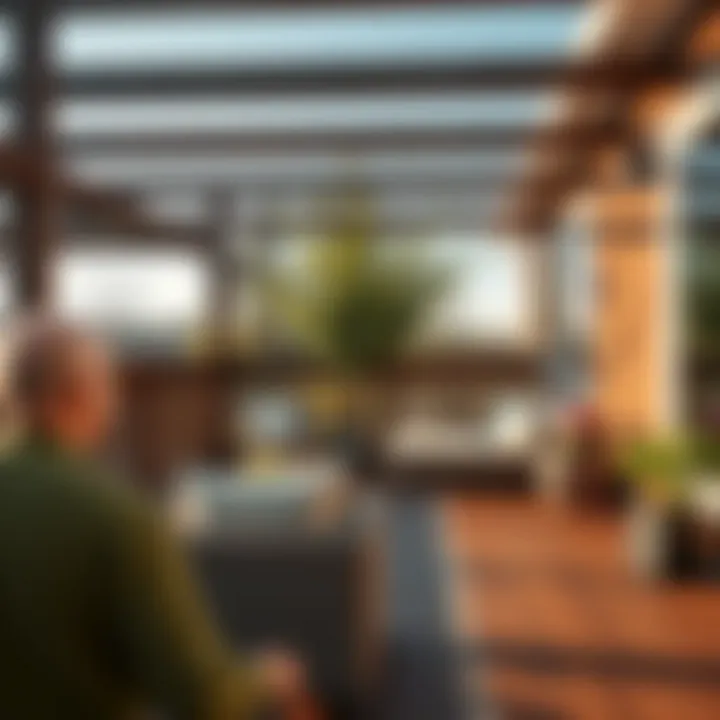
Softwood decking remains a popular choice for many homeowners due to its affordability and ease of installation. Options like pine, cedar, and redwood are commonly utilized.
- Cost Range: On average, softwood decking can cost anywhere from $2 to $5 per square foot. Prices hinge on factors such as quality and treatment. Treated pine, for instance, is generally cheaper, while cedar can tread into the higher end of this range.
- Benefits: The charm of natural aesthetics, coupled with quicker installation times, makes softwoods attractive for DIY enthusiasts. The light weight also facilitates easy handling.
- Considerations: Be mindful that softwoods tend to require more maintenance, including sealing and staining to maintain their appearance against weathering. Regular upkeep can add to the lifetime costs.
Hardwood Decking Price Insights
Hardwood decking is often regarded as a premium choice. While significantly higher in initial cost, it offers longevity and durability that many find worth the investment.
- Cost Range: Expect prices to start around $5 and soar up to $15 per square foot for species like Ipe, Mahogany, or Teak. The quality of wood, sourcing, and treatments can dramatically influence these figures.
- Benefits: Hardwoods boast natural resistance against decay and insects, reducing the need for chemical treatments. Their dense nature lends a sturdiness that withstands the test of time, making them appealing for long-term projects.
- Considerations: The upfront investment is substantial, and their weight can present challenges during installation. Furthermore, their sourcing conditions may impact sustainability – an essential factor in today’s eco-conscious environments.
Comparative Cost of Composite and PVC Decking
As the conversation evolves around decking materials, composite and PVC options emerge as alternatives that deliver modern solutions with unique benefits.
- Cost Range: Composite wood averages $4 to $10 per square foot while PVC can range from $6 to $12 per square foot. Both categories' prices hinge on brand reputation, color choices, and manufacturing processes.
- Benefits: One of the key advantages of composite and PVC decking lies in their low maintenance needs—no painting or staining required. They are crafted to resist fading and staining, reflecting advancements in technology in decking materials.
- Considerations: The plastic components may not appeal to every homeowner who prefers the authentic feel and appearance of natural wood. Also, their higher price point means they are often regarded as a premium option.
"When choosing materials for your deck, seeing the bigger picture of lifetime costs versus initial investments can yield a more rewarding decision."
In sum, analyzing the various costs associated with softwood, hardwood, and composite materials provides critical insight. This understanding fosters well-informed decisions that go beyond surface-level comparisons, paving the way for projects that satisfy practical needs while achieving design ambitions. Think about where you want to spend your money wisely; it could save you in the long run!
Additional Costs Beyond Material
When planning a deck construction project, many homeowners often focus primarily on the costs of timber and other materials. However, overlooking additional costs can lead to unexpected expenditures that may derail your budget. Understanding what these costs are and how they fit into the overall project is crucial for effective financial planning.
Not every expense can be pinned down to
material costs. To make wise choices, one must consider various factors such as labor, permits, and ongoing upkeep. Each of these aspects plays a significant role in determining the total investment for your deck.
Labor Costs
Labor costs can vary widely depending on location, experience of the crew, and complexity of the project. Hiring a contractor might cost more upfront, but they often bring skills that minimize costly mistakes.
On the flip side, if you decide to tackle the project yourself, you may save on labor, though you might spend more time and effort. A rule of thumb is to calculate labor expenses as about 30-50% of your total deck budget. Keep in mind, if the project involves complicated designs, challenging slopes, or the need for specialized techniques, hiring a professional may save you headaches in the long run.
"You get what you pay for" is a phrase that rings true when it comes to labor costs. Investing in skilled labor can mean the difference between a structurally sound deck that stands the test of time and a DIY disaster.
Permits and Regulations
Building a deck usually comes with a set of local regulations and permit requirements. Depending on your area, these might range from filing a simple notice to navigating more complex zoning laws. The costs associated with permits can vary, often falling between $100 and $1,000.
Before starting, it’s wise to check with your local building authority to avoid potential fines or even the need to dismantle an unpermitted deck. This legwork could not only save money but also ensure you’re building safely and legally. Doing it right the first time often saves more hassle down the road.
- Research local requirements: Understanding your locality's regulations about deck height, size, and materials can save time and money.
- Get all necessary permits before beginning construction.
Maintenance and Upkeep Expenses
After the initial construction phase, your deck will need ongoing maintenance. This is where many homeowners underestimate costs. Regular upkeep is essential to protect your investment and ensure the longevity of the deck. Depending on the materials used, this could include:
- Staining or sealing to protect against the elements.
- Cleaning to avoid mold and mildew buildup.
- Repairs that may arise over time due to wear and tear.
For example, pressure-treated wood may require yearly staining, while composite boards might need less frequent attention. Having a budget for these upkeep costs, estimated at about 1-3% of the deck's initial cost per year, will help maintain the integrity and aesthetic of your outdoor space.
In summary, when budgeting for deck construction, it is essential to factor in the additional costs that go beyond just materials. Understanding labor, permits, and maintenance can contribute significantly to a well-rounded financial plan.
Being informed will better prepare you for the actual investment you’re making in your home, ensuring your deck becomes a durable, enjoyable feature for years to come.
DIY vs. Hiring Professionals
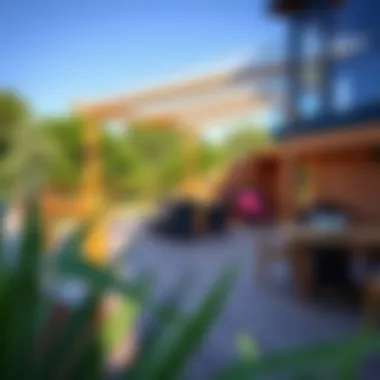
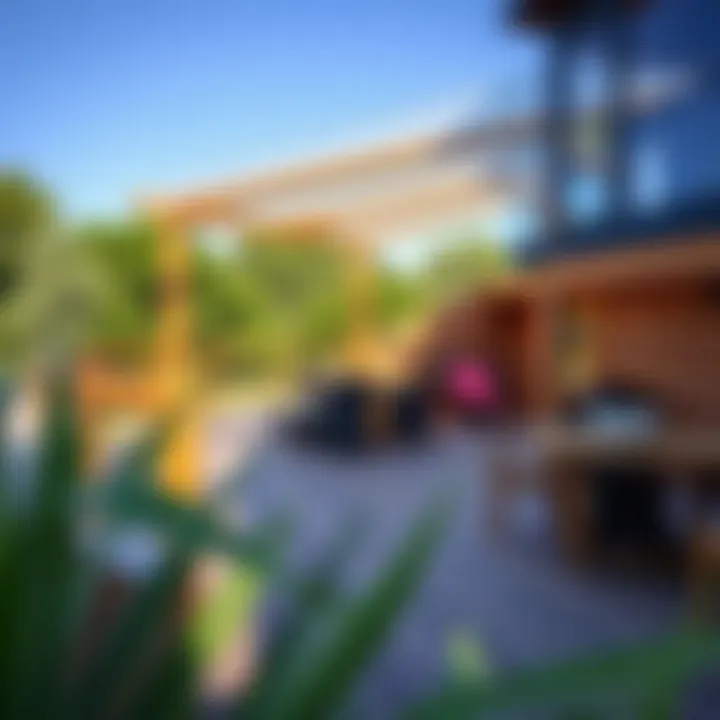
When it comes to deck construction, homeowners often find themselves deliberating whether to tackle the project themselves or hire skilled professionals. This decision can impact not only the overall cost but also the quality and longevity of the deck. Understanding the ins and outs of both options can help homeowners as they decide how best to approach their decking project.
Pros and Cons of DIY Decking
Taking a DIY approach to building a deck can be a very appealing choice for many homeowners. The idea of saving money while also taking pride in completing your own project is certainly enticing. However, like anything worth doing, it comes with its own set of challenges and considerations.
Pros
- Cost Savings: The most obvious benefit of doing it yourself is the potential savings. Materials and costs associated with labor fees often make up a big chunk of the budget. By doing the labor yourself, you sidestep these expenses.
- Creative Control: When you construct the deck yourself, you maintain complete creative freedom. You can tweak designs and changes any time along the way.
- Satisfaction of Accomplishment: There’s something uniquely fulfilling about finishing a project with your own hands. For many, it’s not just about the deck itself but also the journey of building it.
Cons
- Skill Level: Not everyone has the necessary skills to build a durable and safe deck. Mistakes can result in structural issues, which could ultimately lead to more expensive repairs down the line.
- Time Investment: While DIY projects might seem appealing, they can take a considerable amount of time. Proper planning, execution, and the potential need to learn as you go often extend timelines.
- Additional Tool Costs: Depending on your current toolkit, you might need to purchase or rent specialized tools. This can add unexpected expenses, sometimes negating any savings from the labor costs.
Cost Implications of Professional Installation
Hiring professionals to handle your deck construction involves its share of advantages and disadvantages. Though it may seem like a more costly option upfront, understanding the comprehensive benefits can make it worthwhile.
Benefits
- Expertise: Professionals bring years of experience to the table. They’re familiar with building codes, local regulations, and best practices to ensure your deck is safe and durable.
- Time Efficiency: Experienced contractors are typically quicker. They can usually complete projects in a fraction of the time it would take a DIYer.
- Quality Assurance: Professionals often provide warranties on their work, which gives homeowners peace of mind knowing that the deck is built to last.
Considerations
- Higher Costs: The primary drawback is the labor cost, which can significantly increase the project's overall price. It’s essential to get quotes from multiple contractors to gauge a fair rate.
- Less Control Over the Process: Once you hand over the project to professionals, you may have to step back and refrain from making as many changes. It can lead to a feeling of detachment from the project.
In weighing the benefits and downsides of DIY versus professional installation, homeowners should consider their own skills, the project's complexity, and budget constraints. Either decision carries weight, but evaluating the potential implications can lead to an informed choice.
Budgeting for Your Deck Project
Setting a budget for your deck project is not just a nice-to-have; it’s a fundamental step that can dictate the entire course of your endeavor. A well-planned budget helps in aligning your ambitions with your reality. With lumber prices fluctuating and unexpected expenses creeping around every corner, being financially prepared makes a world of difference.
A budget can guide you, ensuring you don’t bite off more than you can chew when it comes to material selection and design details. It serves as a blueprint that facilitates better decision-making if you stick to it. Not forgetting to account for hidden costs is equally important, as this might save you from nasty surprises that can derail your project.
Setting a Realistic Budget
Creating a realistic budget requires a pinch of foresight and a sprinkle of diligence. Begin with the basic expenses: measure your deck size and multiply that by the material costs per square foot. But don’t stop there; consider the intrinsic costs associated with quality wood, craftsmanship, and longevity.
- Material Costs: Check out local suppliers like Home Depot or Lowe's for current prices on various wood types such as pressure-treated pine, cedar, or composite. Prices aren’t universally fixed. Look around and do your homework.
- Labor Fees: If you hire a professional, find out their going rates. Different locales might carry different price tags.
- Permits: This can be a hidden gem of an expense. Depending on local regulations, permits might add to your budget. Always best to check with your town or city’s building department.
- Tools and Equipment: If you are opting for a DIY route, the cost of tools can sneak up on you. From saws to drills, make sure to tally them into your budget.
Contingency Planning for Extra Costs
Life is unpredictable, and so can be deck building. A contingency fund is your safety net, ready to soften the blow of unexpected expenses. Aim for about 10-20% of your total budget for this cushion.
Consider the following when planning this buffer:
- Material Surprises: What if a supplier has run out of your chosen material, forcing you to pivot to a pricier option?
- Weather Delays: Rain or snow could push back your timeline, resulting in additional labor charges.
- Design Changes: Sometimes, you might find during the build that your original design isn’t practical, leading to costly adjustments.
"Budgeting isn't just about making numbers; it's about crafting a plan that weaves your dreams and reality together."
Culmination: Making Informed Choices
When it comes to constructing a deck, understanding the various cost factors related to timber is paramount. The choices you make not only affect your wallet but can also dictate the durability and aesthetic appeal of your outdoor space. Having a clear grasp of the elements influencing pricing—such as the type of wood selected, current market trends, and additional hidden costs—provides a solid foundation for making informed decisions.
The landscape of decking materials is diverse; with options ranging from softwoods like pressure-treated pine to the more durable hardwoods such as ipe, each presents its own financial implications. Moreover, market dynamics often shift, causing price fluctuations that should be factored into your budgeting process. Being aware of these nuances can save a homeowner from unexpected expenses down the line.
Several key points rise to the surface when pondering the costs:
- Material Selection: Choose wood types with longevity and maintenance in mind. High initial costs for durable woods can be offset by lower long-term upkeep expenses.
- Local Pricing Variations: Understand that timber costs can vary greatly by region. Familiarize yourself with local suppliers and market conditions to find the best deals.
- Contingency Planning: Life has a funny way of throwing curveballs, so being prepared for unforeseen expenses is crucial. Set aside a portion of your budget for these surprises.
Ultimately, the journey of deck construction begins with a well-informed choice of materials. The more knowledge you have, the better decisions you can make, resulting in a project that meets your aesthetic desires and stays within your budget.
By synthesizing the information throughout this article, it becomes clear that evaluating the cost of timber goes beyond mere figures. It encompasses a broader understanding of your project goals, budget constraints, and the nuances of material selection. This holistic approach will guide homeowners, gardening aficionados, and DIY enthusiasts alike in achieving a structure that not only enhances property value but also provides a personal oasis for years to come.



